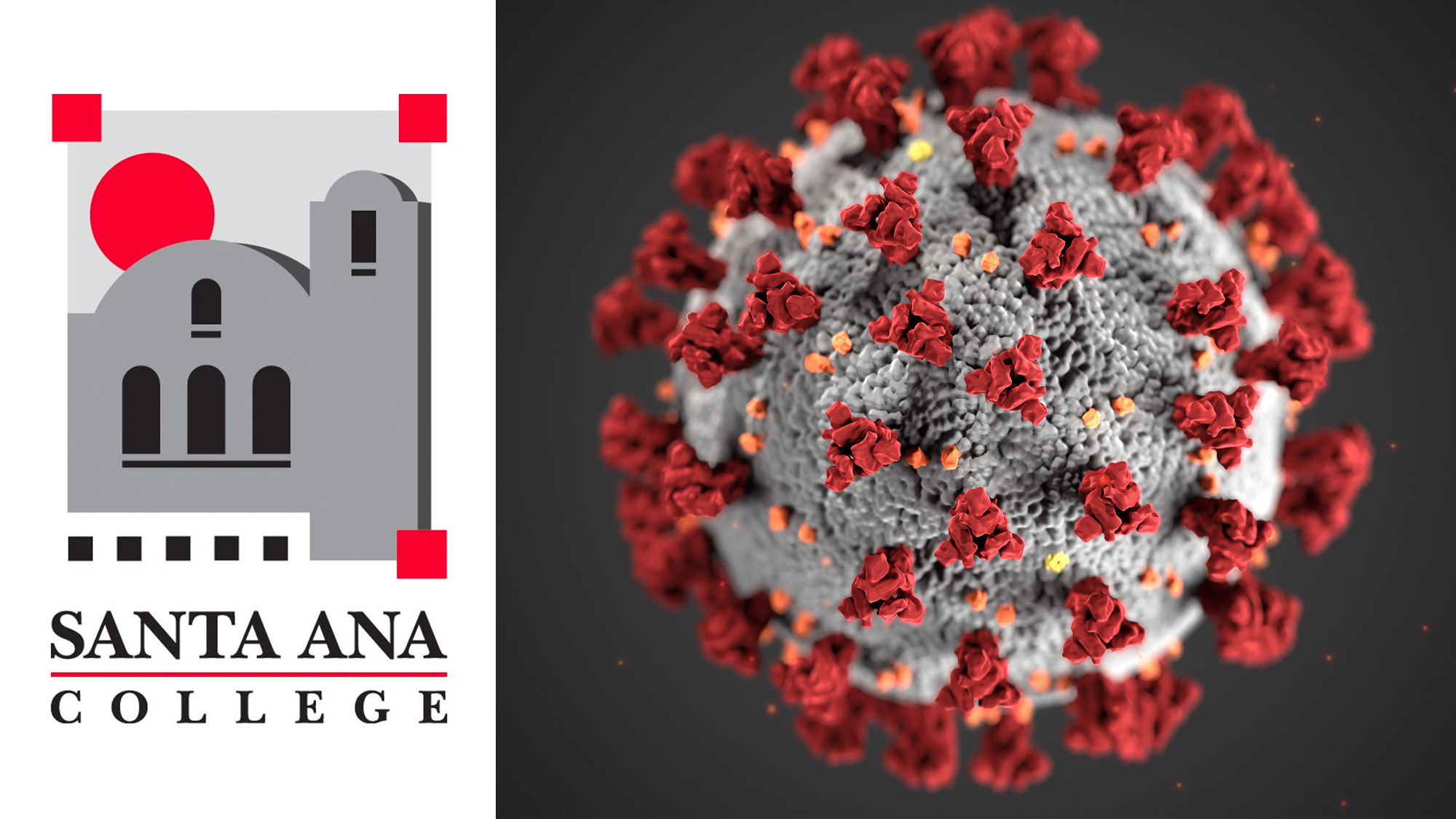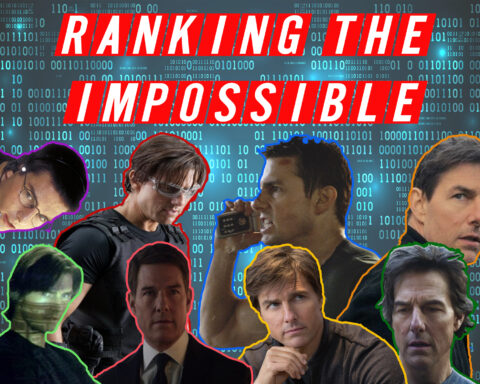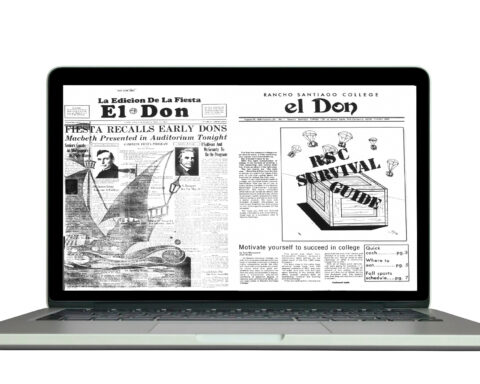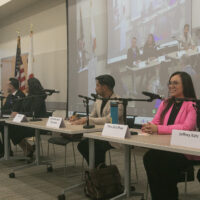Personally, Mayor Pulido, how are you and your family coping with this crisis?
Me and my family are fine. I’m not too worried about them. But look, people of all ages can die from this [virus] and we are not testing enough. We still have too many transmissions occurring. I know I’m asking people to do social distancing and all this, but I also think we should be wearing masks whenever we are outside. We should be wearing gloves, whenever we can. We have to understand that the virus can be anywhere and everywhere and a lot of people are gonna die because we are not being careful enough.
As the county braces for a surge of COVID-19 cases, what’s the biggest issue you think the city of Santa Ana is facing right now?
Our density. We are the fourth densest city in the country. We have New York followed by San Francisco, followed by Chicago, and then Santa Ana. So I have about 18,000 people per square mile. That’s a lot of people and that density could be a problem. So we have to social distance, we have the test. I’m asking doctors, anybody who wants tests to get a test and start testing people. We need to move quickly because everything is going too slowly. You know, we’re not ready, as a government, we are not ready for this. So we as people, as individuals, have to do things and move quickly in order to be able to address this in a way where we can make a difference.
Given that about 45% of the city’s population is foreign-born and some residents are undocumented, what measures is city taking to help and inform these residents who may be fearful of government or have challenges navigating the regulations in place right now?
I’m doing everything I can. I hope a lot of them read this interview that we’re doing here. You know we’re doing Nixle alerts, we are on Facebook, Twitter, everything that we can, we are putting things up for the press, we are putting stuff on Channel Three [public access TV], we’re trying to communicate the message to everybody. I’m telling people not to go to parks, some go out there anyways. If you go to parks, don’t let your kids play on the playground. When they play at the playground, they could be getting infected because another child was there previously and they played on the playground and [the virus] can be transmitted. So we are doing absolutely everything we can.
I had a business call this morning with larger businesses here in the county, actually in the city, and I tell them all to use safe practices. We are putting out a guideline today for restaurants and any food handling area. We are asking them to use gloves, masks, and/or sanitizers. If they are gonna constantly sanitize, that’s good. It’s good to constantly sanitize, but I think countries that have masks, typically are doing better than those that don’t. So where do people get masks? I’m trying to work with vendors and manufacturers and the private sector to get a lot of masks out there, quickly, so that people start wearing masks.
You know whatever we do is not enough. We need to get ahead of this curve and it’s a hard thing to do. I am asking the people to do more social distancing, that’s very important. It’s one of the few protections we have. You know, unfortunately, when people sneeze or cough, or even when you speak, air comes out of your mouth, and if you’re infected, it can have the virus. The virus can then land on something and then you touch it or you can breathe it in. That’s even worse. I know of a doctor in L.A. that I heard yesterday that tested, they got a testing kit, they started testing to see if the kit was accurate or not, they tested some of the bodies within the hospital, some of the corpses, and all the corpses tested positive. So I’m strongly supporting and endorsing a blood-based test, it’s a test that you pick your finger like you do in a diabetic test, and you test. At the college, we need to be testing, you know, we need our first responders, we need everybody testing.
Struggling to pay rent because of COVID-19? The city’s new executive order could help
One of the great dangers facing Santa Ana is that less than 20 percent of the population under the age of 65 have health insurance. How does a city of this size and scope deal with health-related issues of its uninsured citizens, especially during social distancing and COVID-19?
It’s extremely difficult. I just got off the phone right now with Ultimate Medical Services, you know, they’re very active here in the city. They’re asking for money and we’re considering a contribution to them because they are giving out free services to people of the light that we just discussed, where they don’t have the ability to test or the ability to be diagnosed or go to talk to somebody. So we are trying to open up free community care clinics where people can go. But of course, that’s dangerous. You don’t want people congregating there, so whether you’re wealthy, whether you have insurance or you don’t, the way to avoid the virus is by distancing and I know it’s difficult to do that. How do you eat? Somebody’s gotta go to the supermarket. When they go to the supermarket, what happens there? That’s where we’re trying to focus on right now, the transmission change, because if nobody gives it to anybody else, when that day comes, then we beat the virus.
The virus only lasts for 14 days. The only way it stays alive is by jumping from person to person to person and then one gives it to another, and of course we have a pandemic. If you look at California and look at Santa Ana, we are doing better than other areas. Like in New York for example, doesn’t mean that we can’t do better than we’re doing right now, of course we can and we have to. We have to, but we’re not as scared or as precautious as we need to be. I still go out to the parks and see many people, especially young people, just pretending like nothing is going on. You know, they’re skateboarding, they’re running around, they’re doing whatever, and that’s not what we need.
What we need is everybody to, right now, be extra careful. If not for themselves, for their loved ones. Because some people say ‘I’m young, nothing is going to happen to me. If I get it, I’ll beat it. I’m tough.’ but that’s not the attitude. The attitude that you have is going to give [the virus] to other people and somebody in your family is gonna die. So let’s all do it. Let’s protect others, you know, by being safe ourselves. But it is a very, very difficult situation what you’re describing, we’re aware of that, which is why we are trying to push so hard. I’m trying to get the private sectors to step in. All these private doctors, offices, we have many doctors throughout this city. They have clients. I mean, these people are committing no matter who it is, it’s gone to somebody at some point. Trying to get those people, whoever those doctors or service providers may be, trying to get them so that they’re able to address this when they’re visited. So we’re trying to, again, we have calls from people that want to get gloves, trying to get masks. I got doctor’s offices calling me where they get tests. All that is going on.
And we may not have it for a long time. There’s no guarantee that we are going to have it within less than a year. By then, a lot of people could be dead. I mean, have you gone on to the website coronavirus stats. Just look at coronavirus statistics. Look at all those curves. Even the logarithmic curves are going up. I believe we have a lot more infection in the city here than we think we do. We just don’t have enough testing going on. And I’m trying to bring inexpensive, available testing. We have to test our homeless people, we have to test all the first responders, we have to test the jail. We got 500 people in the jail. That’s like a petri dish. That’s like all you gotta do is get one person infected and there you’re gonna have 500 cases just within the city jail.
So we need aggressive and immediate testing. Aggressive, immediate testing and unfortunately, for that, there is no money in the budget for it. It’s something the federal or state or county government should do but they’re not doing it. You know, there is very, very, very little testing going on and we need to find a way to accelerate it. So I’m trying to raise money from a private organization, so is the mayor of Anaheim, so are others. I’m in touch with the Big 13. We are the 11th largest city in the state so we often meet on the phone, just like the way you and I are talking, and we talk to each other on what different cities are doing. And we have a tidal wave coming at us and our main defense is social distancing. That’s our biggest weapon that we have to fight it. Because remember, the only way you get it is from people. People are carriers, they touch something, then you touch the same thing they touched like you go to the store, you touch a counter, they touch the counter, you can get it or somebody sneezes, you breathe the air, you can get it. So this is a very, very…We’ve never seen something like this. We never have.”
https://eldonnews.org/news/2020/03/31/coronavirus-santa-ana-college-breaking-news-live-updates-orange-county/
Medically, how is the city planning in terms of crisis management and safety? Are there enough supplies and hospital beds and medical personnel to keep our citizens safe?
Well, the main thing we are trying to keep is our first responders responding. Remember, our public safety and being able to…you know, make a police call and being able to answer that police call. That through the firefighters, anybody has a problem, the paramedics, etc. and they respond and that’s the main thing we are doing. However, we are now getting into public health, which is not typically what cities do, but in this case, because the county is pretty much absent. They’re doing 80 tests a day. 80 tests a day in a county of 3 million people. Are you kidding me? You know, we need to be doing a hundred thousand tests a day throughout the county to get a hold of this and to find out where it is, how do we contain it. We’ve already gone from containment to mitigation. Containment means you’re trying to limit it. Mitigation means you’re putting up the white flag and you’re circling the wagons. We’re already in that mode officially here in the county. We’re already in the mitigation mode. So the only way to beat it back is to, I believe, bring in the private sector and move forward, you know, very aggressively and very quickly and to be able to test in large numbers but we gotta start with all the, I mean I’m talking to Northgate Market, for example, trying to get all of them to test all their employees. Because what happens if you go to the store and you buy some food and it’s contaminated? Because the cashiers are contaminated, because they’re sick and they don’t know that they’re sick because they haven’t been tested because nobody’s been tested.
The testing is only the tip of the iceberg. Most people have not been tested. By large, most people have not been tested. So that’s what I’m saying, social distancing, masks, you can’t wash your hands often enough. Wash your hands eight times a day. Every time you do something, wash your hands. Whenever you leave your house you’re taking your life in your own hands because you don’t know what you are going to encounter. You don’t know who’s gonna have the virus and who’s not. I know people have to leave sometimes but when you do, like when I go shopping I try to make sure that everybody is wearing gloves like the cash registers, I ask them to do that, wearing masks. And then when you come home, try to wipe off the food before you bring it in the house. You know, buy a little bit of bleach with a sponge and clean it off, disinfect it because you can get a box of Kellogg’s Corn Flakes. What happens if the box has the virus? You go out, buy some cereal, you bring it home, now it’s got the virus, you touch it, you eat it, now you got the virus. You don’t even know how you got it. Most people who are getting it don’t know how they got it. You know, because it’s such an invisible thing and it’s so strong. It can last for days on the surface. So the only way to kill it is sunlight, washing, soap kills it, alcohol kills it, we need to be killing it constantly and stay safe and assume people have it. Don’t assume people don’t have it. Assume other people do have it and protect yourself. Don’t get close to people. Be out there as little as possible. Until we get the majority of the people tested, and we will, we will start testing more and more and more, but until we get most of the people tested, we have no idea what’s going on and that’s a real danger.
And for the college, you know, I think it’s a tough situation because what is the college? It’s like an incubator, potentially. You know, the college, my son goes to SAC and he’s saying, ‘Dad, how come it’s not okay for 50 people to be together but it’s okay for 40 of us to be packed like sardines in a classroom?’ and that when I got to the chancellor, I talked to some of the board members, and I said ‘Look, I know it’s painful. I know you don’t want to do it, but you’re gonna have to. You’re gonna have to shut down for a period of time,’ and they did. They did and it’s the right move to make and it’s a very difficult move to make, but it’s the right move to make right now. Until we have control and when we don’t have control, that’s the right thing to do.
- Free COVID-19 Testing at Santa Ana College - September 1, 2020
- Don’t be too proud to use a food pantry. I wasn’t - July 1, 2020
- Digital Media Center vandalized during anti-police demonstration - June 3, 2020
















